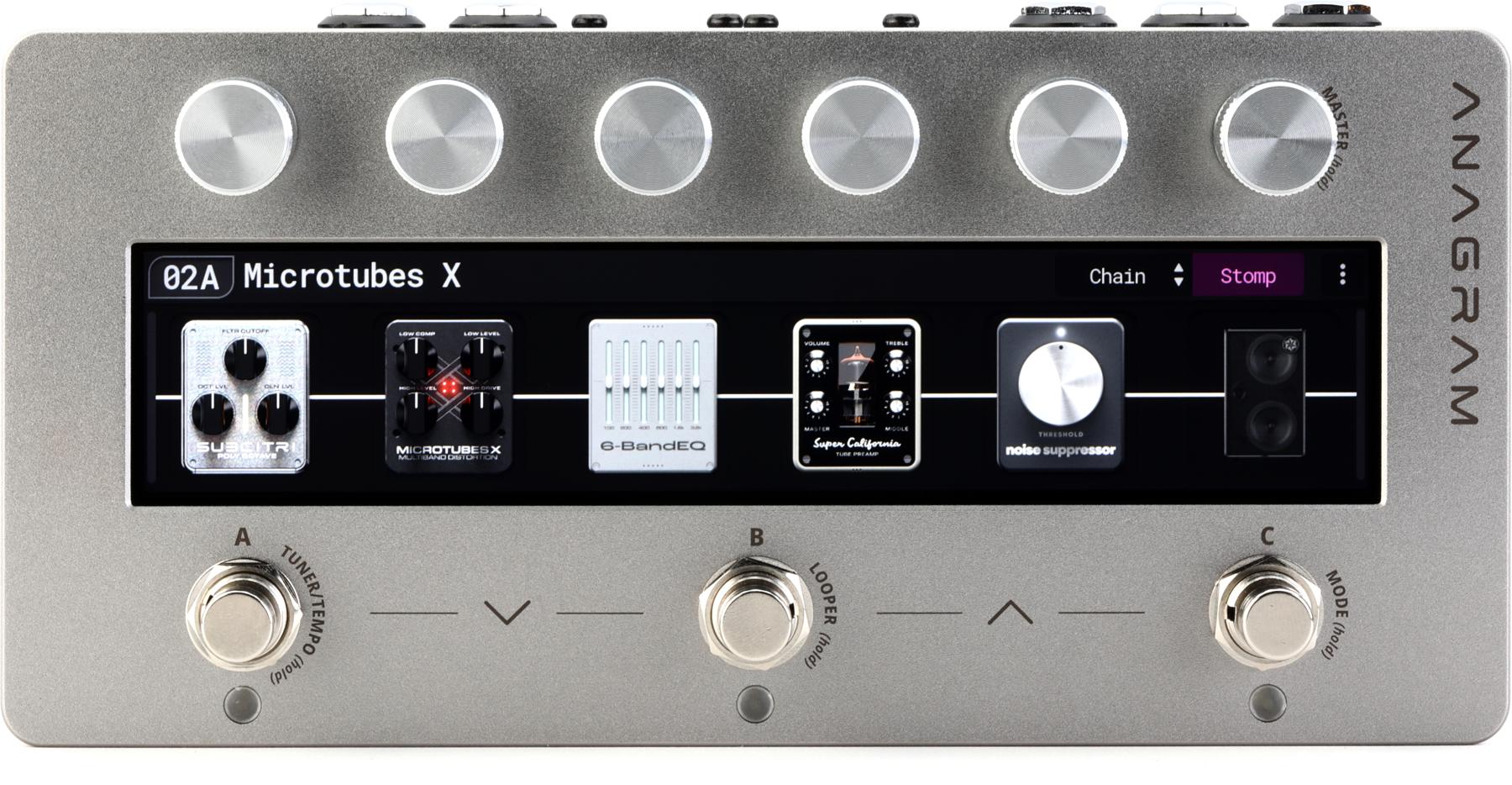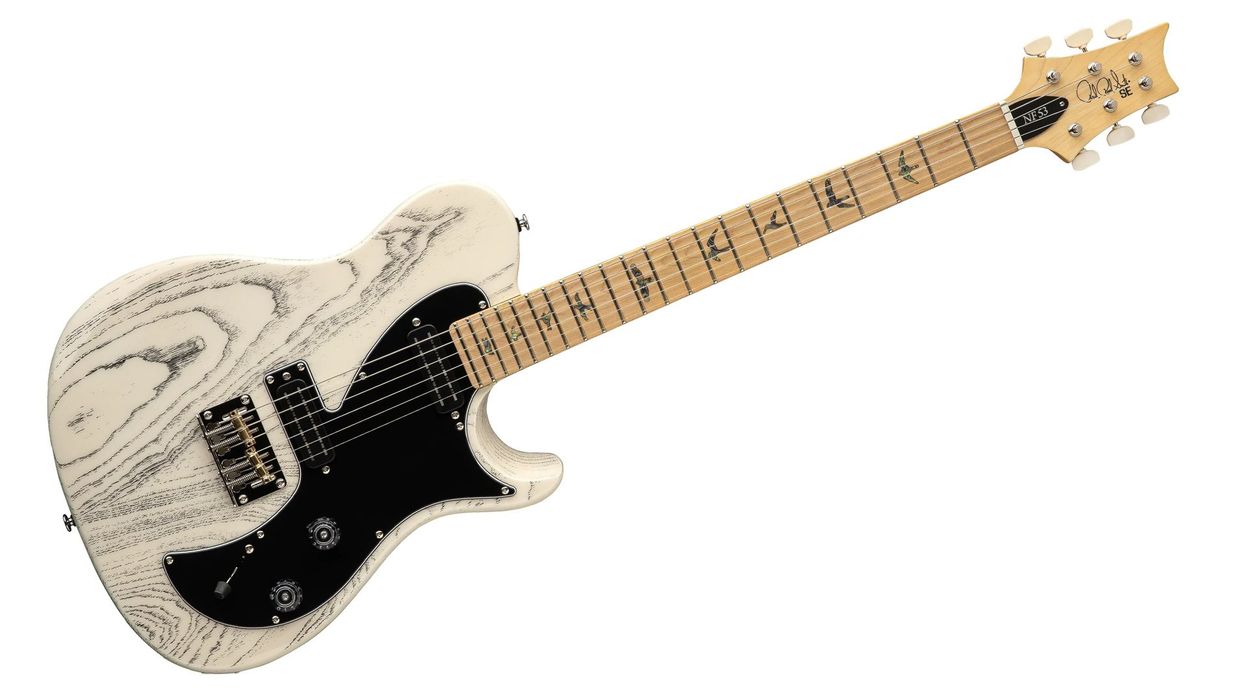After many decades of sticking with flagship body shapes, Fender spent the last several years getting more playful via their Parallel Universe collection. The Meteora, however, is one of the more significant departures from those vintage profiles. The offset, more-angular profile was created by Fender designer Josh Hurst and first saw light of day as part of the Parallel Universe Collection in 2018. Since then, it has headed in both upscale and affordable directions within the Fender lineup—reaching the heights of master-built Custom Shop quality in the hands of Ron Thorn, and now in this much more egalitarian guise as the Player Plus Meteora HH.
Body profile and humbuckers aside, the Meteora is very much a Fender, with a bolt-on neck, 25.5" scale length, and that iconic headstock profile with spaghetti logo. Even closer examination reveals an impressive array of features that make it an extra-impressive instrument for the price, and a cool alternative to traditional Fender offerings.
Comet Club
The Mexico-built Player Plus Meteora HH comes in three finishes—cosmic jade, Belair blue, or silverburst (as seen on our review sample)—all of which help the guitar cut a dashing figure on stage. The body is made from solid alder, a go-to Fender tonewood since the late ’50s. Lightweight stocks of this timber have been getting harder to come by in bulk, and perhaps as a result the review guitar tips a little toward the heavy side at around 8.4 pounds. Then again, the Meteora’s body is bigger than, say, a Stratocaster, which adds a bit to the weight. Forearm and ribcage contours enhance playing comfort significantly, and the guitar balances surprisingly well on the lap (almost certainly one of Hurst’s design mandates). The sharply sloped lower bout, however, makes it tricky to lean against an amp safely. Keep that in mind before you turn your back on it.
The neck is fashioned from a single piece of maple and 22 medium-jumbo frets are arrayed across the 12" radius fretboard, which measures 1.685" at the synthetic-bone nut (Belair blue and cosmic jade versions feature a pau ferro fretboard). The neck is carved in Fender’s popular “Modern C” profile, which feels great in hand, and the overall ergonomics are aided by a nicely rolled fretboard edge. The single-action truss rod can be adjusted at the headstock, which is home to Fender’s deluxe sealed locking tuners and a modern roller string tree for the first and second strings—all of which means you can use the two-post synchronized tremolo with a little more peace of mind. The return-to-pitch capabilities are impressive.
Though the fresh body profile may be the initial draw for many, the electronics—and the possibilities they enable—will probably seal the deal for a lot of prospective customers. They certainly make the guitar a lot of fun to explore. The relatively new Fireball humbuckers look a lot like smaller Fender Wide Range pickups. Under the covers, though, they are pretty standard PAF-style humbuckers, with adjustable pole pieces in all six positions of each coil, though half of these are inaccessible with the cover on.
This pickup recipe makes the Meteora a world’s-your-oyster kind of performer.
And while the name implies that the Fireballs are hot, the specs are similar to medium-wind alnico humbuckers, with the neck reading around 7.24k ohms DC resistance and 4.0 henries inductance, and the bridge measuring 7.68k ohms and 4.5 henries. The pickups are wired through a 3-way toggle switch on the upper horn, with a master volume and dedicated tone controls for each pickup below. The volume knob also functions as a push-button switch to split the coils of both pickups.
Silver Stars
Tested through a Friedman Dirty Shirley Mini and 2x12, a tweed Deluxe-style 1x12 combo, and a Neural DSP Quad Cortex into the studio monitors, the Player Plus Meteora HH reveals a fairly traditional and even vintage-leaning sonic range that contrasts with its moon-shot looks. The not-too-hot humbuckers sound clear and open and generate relatively little amp breakup at modest volumes, which I’d say is a good thing, as it enables a wider range of touch sensitivity than high-gain humbuckers usually allow.
This pickup recipe makes the Meteora a world’s-your-oyster kind of performer. With a cranked amp, lead channel, or overdrive (in this case a Tsakalis Six and Wampler Tumnus Deluxe), the Meteora produces sizzling power-chord and rhythm sounds and singing lead tones with ease, with rich, articulate cleans at the ready when I backed the guitar volume down. It’s hard to gauge how much effect the maple neck and alder body have on the humbucker voicings. But expect the Meteora to sound better balanced and crisper compared with the average PAF-equipped instrument. There’s very little mud and the coil-split tones are nice and jangly—although, as with many split humbuckers, they’re a little on the thin side without a booster or compressor engaged. Still, they do the trick, and add another useful arrow to the Meteora HH’s already packed quiver.
The Verdict
Players in love with unconventional looks who enjoy a twist on traditional PAF-style sounds will find a lot to like in the Player Plus Meteora HH. The guitar packs a wide range of clean-to-mean tones, offers easy playability, and is made super versatile by tone controls and coil-splitting options that dramatically expand its tone palette. Dual humbuckers mated to a 25.5" scale is always a cool proposition, and the Meteora’s marriage of Fender and Gibson attributes is a great way to split the difference.

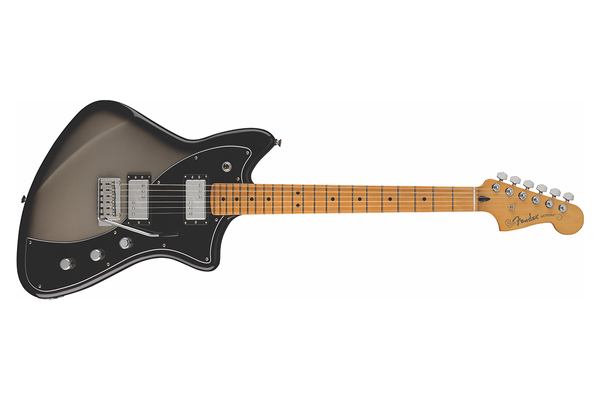






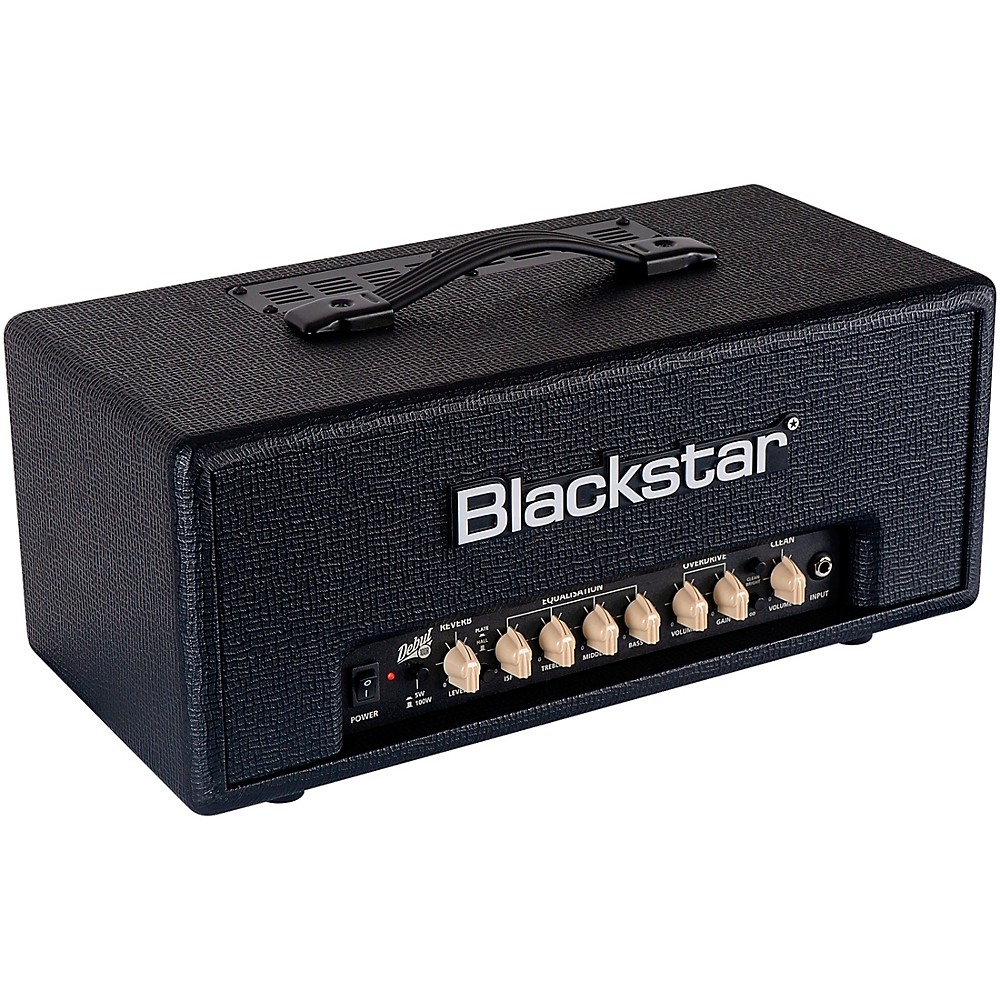
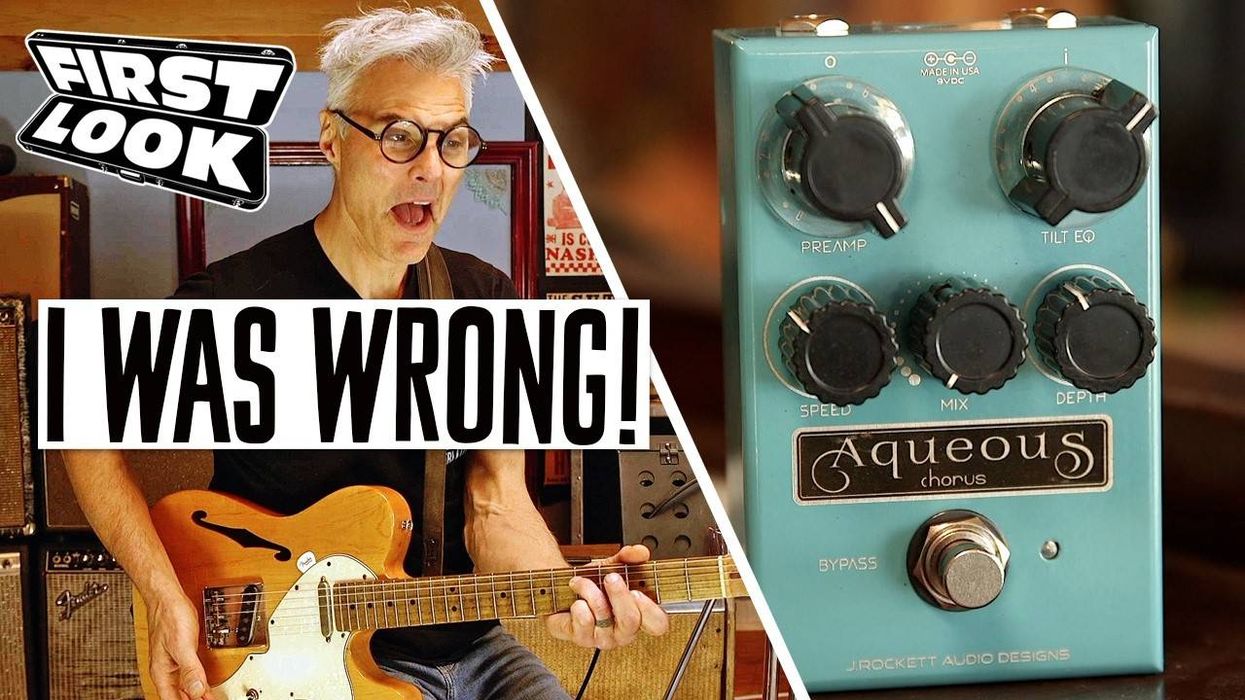
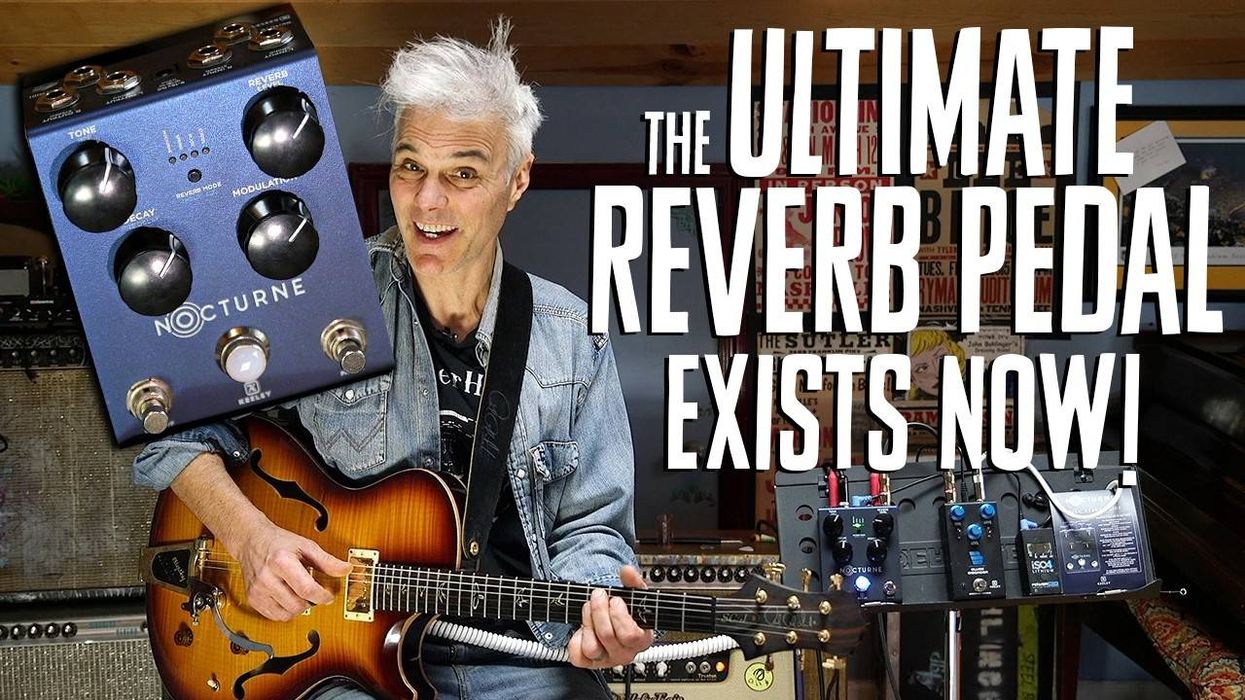


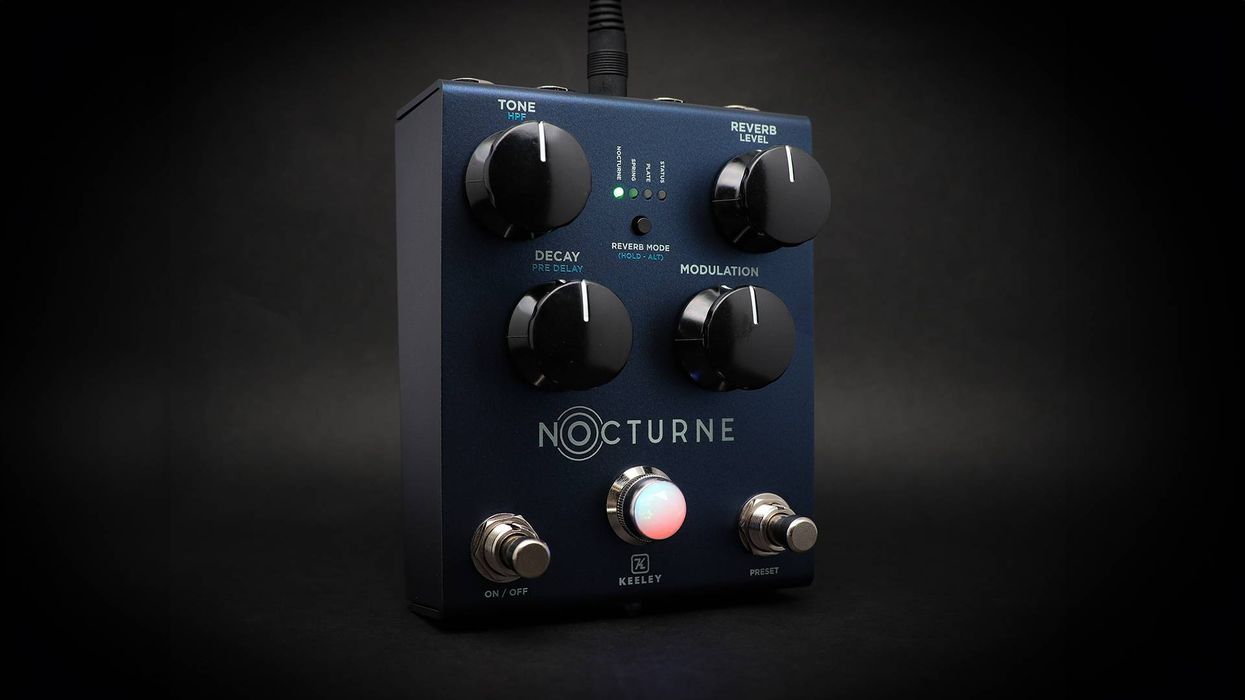
![Rig Rundown: Russian Circles’ Mike Sullivan [2025]](https://www.premierguitar.com/media-library/youtube.jpg?id=62303631&width=1245&height=700&quality=70&coordinates=0%2C0%2C0%2C0)


